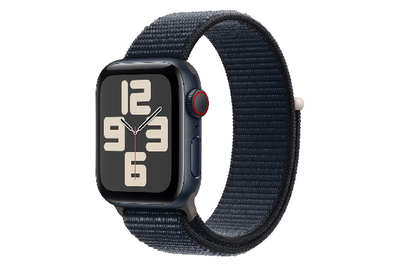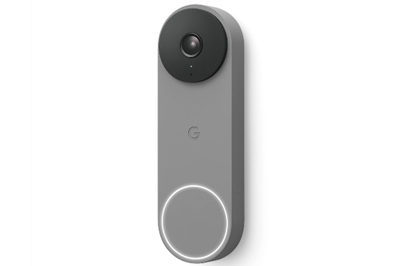13 Best Smart Home Devices to Help Aging in Place in 2025
When you’re making an aging-in-place plan, personal safety should be a top priority. According to the Centers for Disease Control and Prevention, more than one out of four people 65 and older fall each year. The US Fire Administration (an entity of FEMA) says that the same age group is 2.6 times more likely to die in a fire than the population as a whole. Smart safety devices can keep tabs on potential dangers and connect you with emergency services if needed. And if you’re a caregiver, you can keep an eye out for some of those worries and possibly save your loved one’s life, notifying both emergency services and contacts whether they’re on the other side of town or the other side of the country.
Smart emergency-contact systems

Typical emergency-contact systems consist of wearable electronic devices that provide on-call monitoring and may include fall alerts; some charge a monthly fee. Having a way to contact emergency services is an absolute must. “A device that can be worn on the wrist allows for 24/7 monitoring and can help identify against the biggest and most common concern, which is a fall,” said David Siegel, CEO of Nationwide Medical. “A wrist-worn device can also provide important data, detect falls, determine location, and even serve as a telephonic or text communication device.”
For this guide, we considered nontraditional smart options, which don’t require a contract, can be used every day, and incorporate a variety of convenience features.
Top pick
Compatible with: Apple Home
How it helps: An emergency-contact system works only if you actually wear the device. Our experts noted that they’ve frequently heard of resistance to wearing devices such as clunky bracelets and necklaces with built-in emergency buttons. “[Many people] don’t want to wear them because of the stigma,” said Andy Miller, senior vice president of innovation and product development at AARP. “It makes them feel old.” The Apple Watch SE is more discreet than any other emergency-contact system out there—probably because it wasn’t designed as an emergency-contact system. It’s a smartwatch that can make and take calls, stream music, control smart-home devices via Siri voice commands, and more.
Why it’s a pick: The Apple Watch SE has built-in fall detection and crash detection, as well as a side button that can call emergency contacts. This version of the Apple Watch can also share with emergency responders important medical information, such as blood type and medications, and physical activity including ECG stats. It even works with apps like FallCall, which can trigger a central monitoring station (versus 911) via Siri voice commands or an icon on the watch. If you want more advanced sensors to monitor additional heart info and blood-oxygen levels, we recommend the Apple Watch Series 9.
One important note: To contact emergency services, the base-model Apple Watch must be paired with an iPhone that’s within Bluetooth range or connected to a known Wi-Fi network (with Wi-Fi calling enabled). If that’s a concern inside or outside the home, opt for a pricier model with a cellular plan (which costs extra). We also recommend pairing the Apple Watch with a bedside wireless charger, which increases the cost but also improves the functionality.
Top pick
Compatible with: Amazon Alexa
How it helps: If you don’t like the idea of a wearable but want the assurance of easy access to assistance, consider Alexa Emergency Assist, a paid service ($6 per month or $59 per year) that connects you to live responders who can request emergency services and relay critical medical information. It works with all Amazon Echo smart speakers and screens, but we like the Amazon Echo Dot because it’s the smallest, least expensive Echo smart speaker, and it responds well to voice commands to deliver entertainment and news, as well as to put you in near-instant touch with emergency contacts such as family, friends, and caregivers through Alexa Calling.
Why it’s a pick: Alexa Emergency Assist had the fastest response time of any medical alert system we tested. In addition to connections with live emergency services and notifications when a smoke or carbon monoxide alarm has been detected, the service can notify up to 25 of your emergency contacts. If you aren’t familiar with smart speakers, it may impose a bit of a learning curve, but once you get used to it, Alexa Emergency Assist offers several potentially useful features, including the ability to act as an intercom, allowing family, friends, and caregivers with Echo devices to “drop in” for an instant two-way conversation.
Anne Madison told us that the service works well and she’s “now a firm believer in it” after a fall in the bedroom left her unable to get up. “I said something along the lines of ‘Alexa, call for help,’ and an actual human operator answered, listened to my problem, and indicated that they would call 911,” she said. Paramedics arrived within a few minutes and suggested that she call a relative. In the chaos, Anne misplaced her phone, but a quick “Alexa, call my phone” helped her locate it just as swiftly.
Smart displays and voice-communication devices

Smart screens make keeping in touch easier and more personal than a simple phone call. These devices connect to your home’s Wi-Fi network, allowing for video and voice calls to family, friends, telemedicine appointments, emergency services, and more. They also offer voice control, which allows you to call up news, weather, and trivia, as well as to control and view smart-home devices such as light bulbs, security cameras, and smart plugs.
Top pick
Compatible with: Amazon Alexa
How it helps: Smart speakers with a built-in screen let you stay on top of the news and weather, and stay in touch with the important people in your life. “Voice-enabled technologies also provide a little bit of information and social interaction for people who live alone primarily,” said Laurie Orlov, founder and principal analyst at Aging and Health Technology Watch. “A smart speaker is so nice because they can ask a question and hear a voice.”
Why it’s a pick: The Amazon Echo Show 8 (3rd Gen) has excellent sound and a 13-megapixel face-tracking camera, both of which are great for making video calls. Alexa-based smart displays also have a “drop in” feature, which enables a two-way video chat with another Echo Show, just like on a two-way intercom. (If only one party has an Alexa device, that’s okay: Video chats also work with the Alexa app on any smartphone.)
People who are more tech-savvy can also use Alexa on the Echo Show to schedule Reminders about appointments and medication doses, watch videos about cooking, or view video with closed captioning (when available). In addition, the 8-inch touchscreen can call up the Show and Tell feature, in which blind and low-vision people can identify grocery items simply by holding them up to the Echo Show’s camera and asking “Alexa, what am I holding?”
If you have speech limitations, you may have problems using Alexa successfully.
Top pick
Compatible with: Apple Home
How it helps: Several experts we spoke to highly recommended a tablet, especially the Apple iPad due to its easy-to-use touchscreen, portability, and large screen size, as well as the Siri voice-control system. Like all smart speakers and screens, the iPad can provide news, weather, and podcasts, as well as games, video-streaming services, and more. Many people find an iPad more comfortable to use than a laptop, especially as it functions more or less like a smartphone and manual controls are easier to use because the app icons are larger.
Why it’s a pick: If you’re a little tech-savvy, you can use an iPad to access the apps for all of the devices we mention elsewhere in this guide. Using both Siri and an iPad, you can combine the control of multiple smart-home devices with one voice command: For instance, you can say “Siri, turn on the living room” to power several lights—and you can combine those lights with smart plugs, cameras, and other smart devices, as long as they support the Apple Home platform. (Siri voice commands and the Home platform are not compatible with as many smart-home devices as Alexa and Google Home are.)
Smart contact sensors

If you’re planning to get a home security system, such as the Ring Alarm system, buy sensors that work with that specific system. Otherwise, individual smart contact sensors are very inexpensive and offer a good way to create a do-it-yourself home security system that can keep tabs on doors, windows, and drawers. Such sensors are also helpful for caregivers who need to track a loved one’s daily activities. For instance, a sensor on a door can send smartphone alerts whenever someone enters or leaves, or if the door has been left open too long. And a sensor placed on a refrigerator door lets you know that your loved one is remembering to eat.
Top pick
Compatible with: Amazon Alexa, Apple Home, Google Home, IFTTT, Matter, SmartThings
How it helps: Many smart contact sensors are tied to security systems or specific platforms, such as Alexa, Apple Home, or Google Home. All of them can integrate with other smart devices so that opening a door can trigger a light, prompt a voice announcement, or even call the police.
Why it’s a pick: The Aqara Door and Window Sensor uses Zigbee wireless technology instead of Wi-Fi, so it works well in parts of a house where Wi-Fi is weak. This device requires the use of a plug-in device called an Aqara Hub, which can support up to 128 sensors and also adds smart-home support so that you can pair it with other smart devices around the house. For instance, we created automated Routines using the Alexa app that would announce “The back door is open” on an Amazon Echo Show and trigger a smart light bulb to turn on whenever someone opened the door.
Water-leak sensors

About one in 60 US households each year file an insurance claim related to water-damage incidents, according to the Insurance Information Institute. Those often happen in hard-to-notice and even harder-to-reach areas such as the basement, by the water heater, or behind the washing machine. Smart water-leak sensors can alert you the instant they detect water, by sending an alert to your smartphone. Some also have a siren or alarm or can be configured to trigger other devices like smart lights to ensure that you catch small leaks before they become a big headache.
Top pick
Compatible with: Amazon Alexa, IFTTT
How it helps: A good leak sensor ensures that you are aware of detected water, even if you aren’t home or nearby. The best models have a loud alarm and the ability to integrate with smart-home platforms so that you can receive smart alerts. We also prefer when alerts can be silenced in the app, so you don’t need to physically access the detector (or wade through water) to stop an alarm.
Why it’s a pick: The YoLink Water Leak Sensor 4 requires a YoLink hub, which you can buy separately or as part of a bundle with multiple sensors. The YoLink model is one of the few to have both top- and bottom-mounted sensor probes, which makes such designs potentially more versatile — in our tests, both sensing methods detected water within two seconds. If water is present, the hub emits an 87-decibel alarm and sends a smartphone alert.
YoLink also sends a smartphone alert when the sensor has gone offline, which we appreciate. You can set an off timer in the app to ensure that the sensor won’t keep beeping after it detects water. If you don’t want to purchase a hub or want Google Home compatibility, we recommend the Kidde Water Leak + Freeze Detector.
Smart locks

Everyone forgets their keys now and then—and sometimes people forget to lock the door, too. Smart locks let you live key-free if you like, and they also allow others to have access to your home without difficulty. Smart locks can respond to remote control as well, and you can set them to alert you when the lock is triggered (and set them to auto-lock). A smart lock can also be helpful if you’re caring for a loved one who tends to wander, or if you just want to make sure the house is locked up for the night. (Note that although many smart locks also offer a keypad option, we don’t recommend that option for anyone with memory issues.)
Top pick
Compatible with: Amazon Alexa, Google Home
How it helps: From a security perspective, smart locks are especially handy because there are no keys to lose—and you can be notified whenever someone triggers the lock. You can also check the status of locks using voice or an app, and you can program them to automatically lock after a set period, when you leave or arrive home, and at a set time every night.
Why it’s a pick: The Schlage Encode Smart WiFi Deadbolt doesn’t have some of the bells and whistles of other smart locks, but this model is about as easy as it gets to set up and use. This lock is also strong and reliable, with built-in smarts that allow you to lock and unlock the door remotely, as well as to check whether the door has been left open. And if you or a loved one ever forgets or misplaces a key, you can use an app to unlock the door.
Another option to consider: The Aqara Smart Lock U100 offers more ways to get into the house, including a keypad and a fingerprint reader. And if you own an Apple Watch or iPhone, you can set up this smart lock to unlock when you simply hold up your phone, via Apple HomeKey. This lock is compatible with Amazon Alexa, Apple Home, Google Home, and Matter.
Cameras and monitoring

Smart security cameras are like a digital castle wall—they allow you to see who is outside your door without having to open it. Doorbell cameras let you screen who is visiting and allow you to decide whether to answer, and regardless they send smartphone alerts and capture video footage when someone visits. Indoor cameras are a great tool for caregivers to keep an eye on the things of a loved one, and they can send alerts when someone is moving about the house (and can serve as a way to document falls for health professionals).
All the experts we spoke with cautioned that the decision to put a camera into someone else’s home should be made in conjunction with the person who will be living with the camera. Some people find a camera to be intrusive, and it can be very scary for anyone with memory issues.
Top pick
Compatible with: Amazon Alexa, Google Home
How it helps: A smart doorbell camera allows you to screen whoever comes to the door from anywhere in the world, regardless of whether the guest rings the bell. When someone rings the bell, you hear it at home but also receive a smartphone notification. From there, you can opt to answer the door remotely or just keep a record of who is coming and going—and how long they hang around. “Video doorbells are great, especially if [the person living with them is] having mobility challenges,” said William Dale, MD, PhD, professor and chair of supportive care medicine at the Center for Cancer and Aging at City of Hope. “Maybe the house is a little big for them or they have to be in a far part of the house, and getting all the way to the doors becomes a challenge.”
Why it’s a pick: The Google Nest Doorbell delivers the best performance, when it comes to speed and accuracy, for determining whether a visitor is a person, animal, car, or package delivery. It can record video to cloud-based storage for free—though it hangs on to that footage for only three hours. If you want to keep video recordings longer, a Nest Aware plan costs $8 per month or $80 per year; bumping that up to $15 per month (or $150 per year) buys you motion-event storage for up to 60 days or 10 days of 24/7 recording.
Top pick
Compatible with: Amazon Alexa, Google Home, IFTTT, SmartThings
How it helps: An indoor camera provides peace of mind when you’re not home, whether you want to monitor your property or your pet. For caregivers, it allows you to remotely monitor home visits, movement, and whether someone is taking their medicine.
All the experts we spoke with were adamant that for caregivers, installing indoor security cameras needs to be a decision made between you and your loved one. “Transparency should be obvious. Nobody likes to be monitored without knowing,” said City of Hope’s William Dale. “These kinds of things have to be really carefully thought about rather than just assumed that it’s okay.” Talk about why it’s important to the person living with the camera, how it works, and how you can use it to communicate, since most cameras come equipped with a speaker and microphone.
Why it’s a pick: The TP-Link Tapo C120 can distinguish between people, pets, vehicles, and general motion, but it’s also inexpensive to run. You can opt to use a microSD card and record 24/7 footage or just motion-activated events. It also supports cloud storage, so you never have to worry about accessing content if someone pulls the card or a power outage occurs; a Tapo Care plan starts at $3.50 per month for one camera and increases to $7 for two, $10.50 for three, and $12 for up to 10. For multiple cameras, this model is more expensive than some of our other picks, but we think the price is still reasonable.
Another option to consider: The Tapo C120 supports Alexa and Google Home but not Apple Home. If Apple Home is your preferred ecosystem, or if you want to use Apple HomeKit Secure Video (a free video-storage service that comes with paid iCloud plans starting at $1 per camera), we recommend the Eufy Indoor Cam C120. The Eufy camera has some of the same features as the Tapo model but is a bit more expensive.















